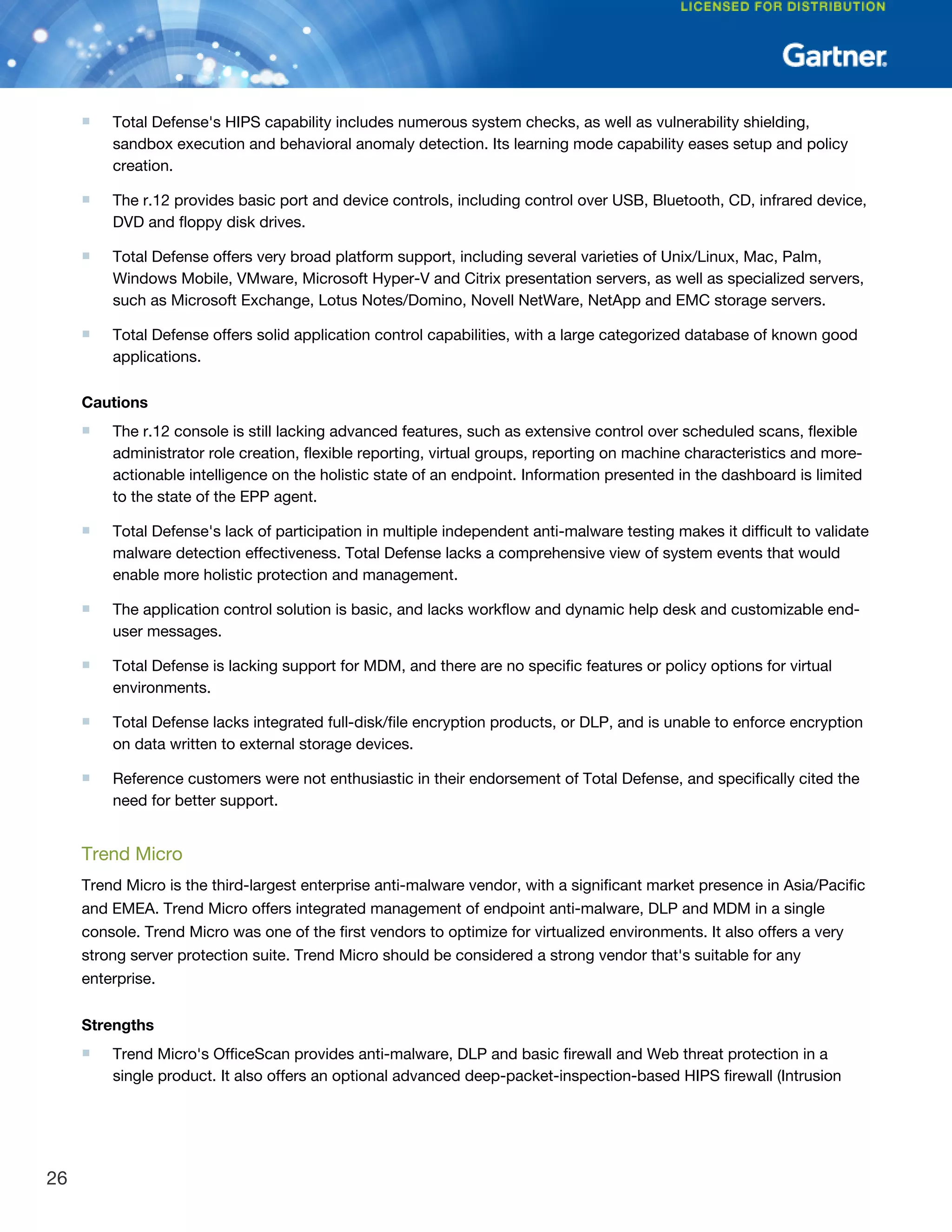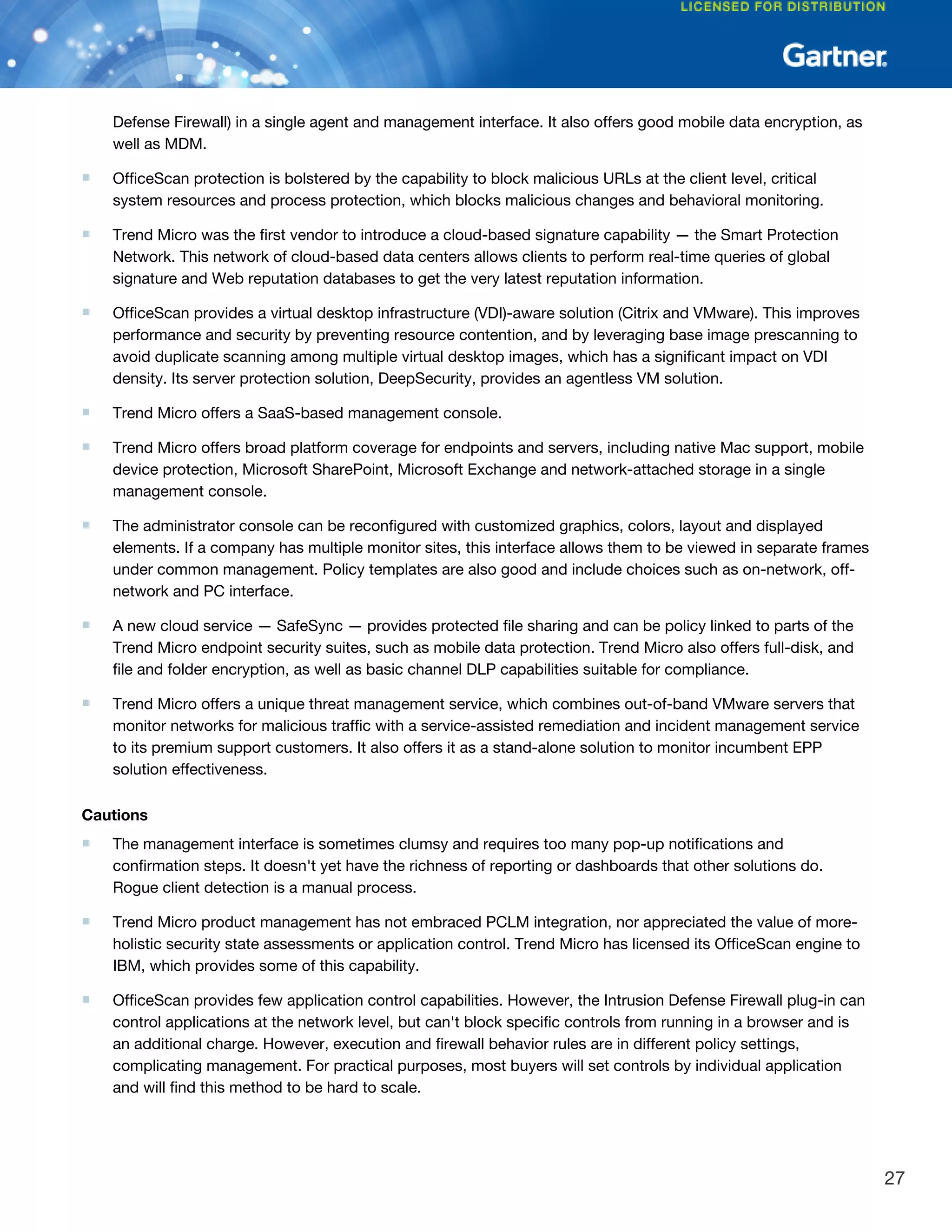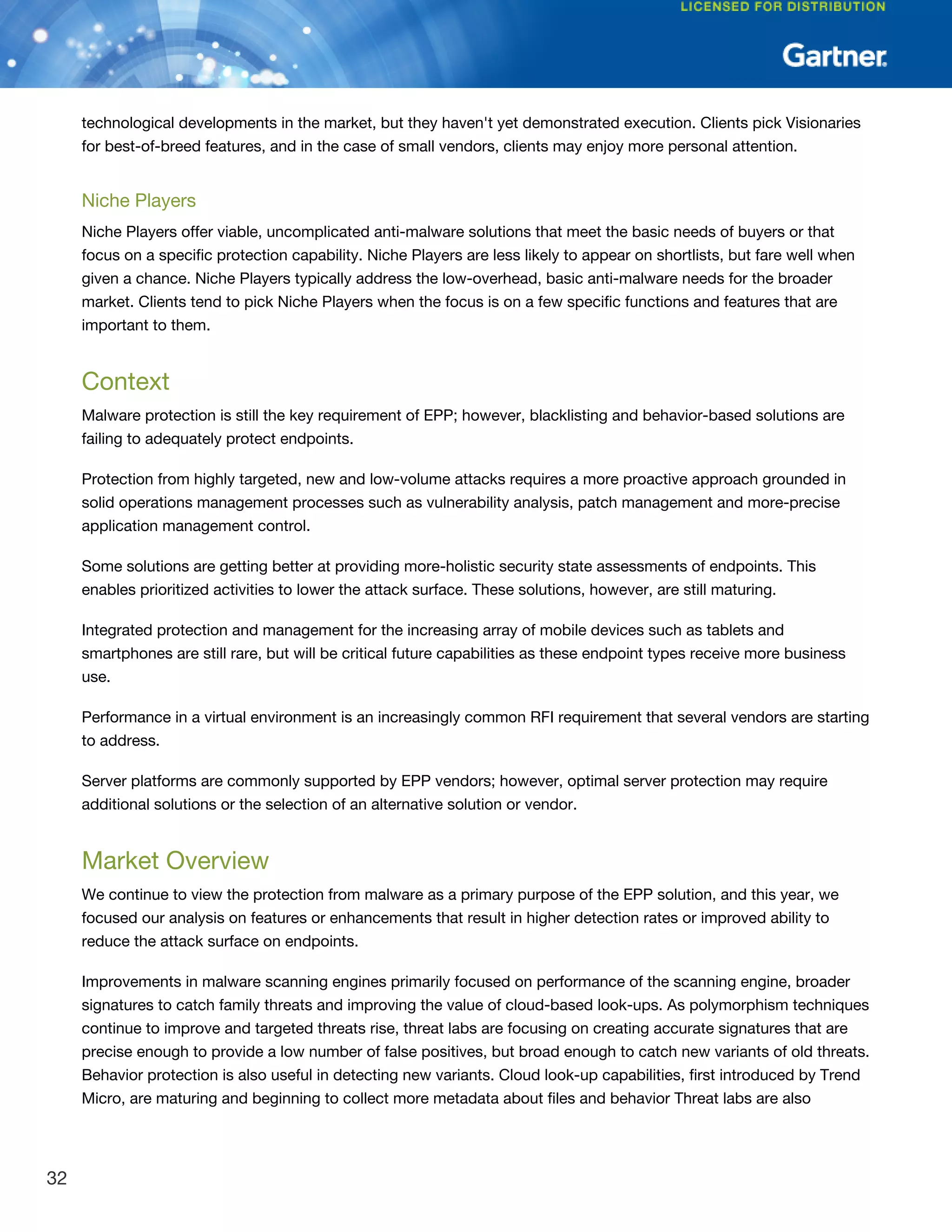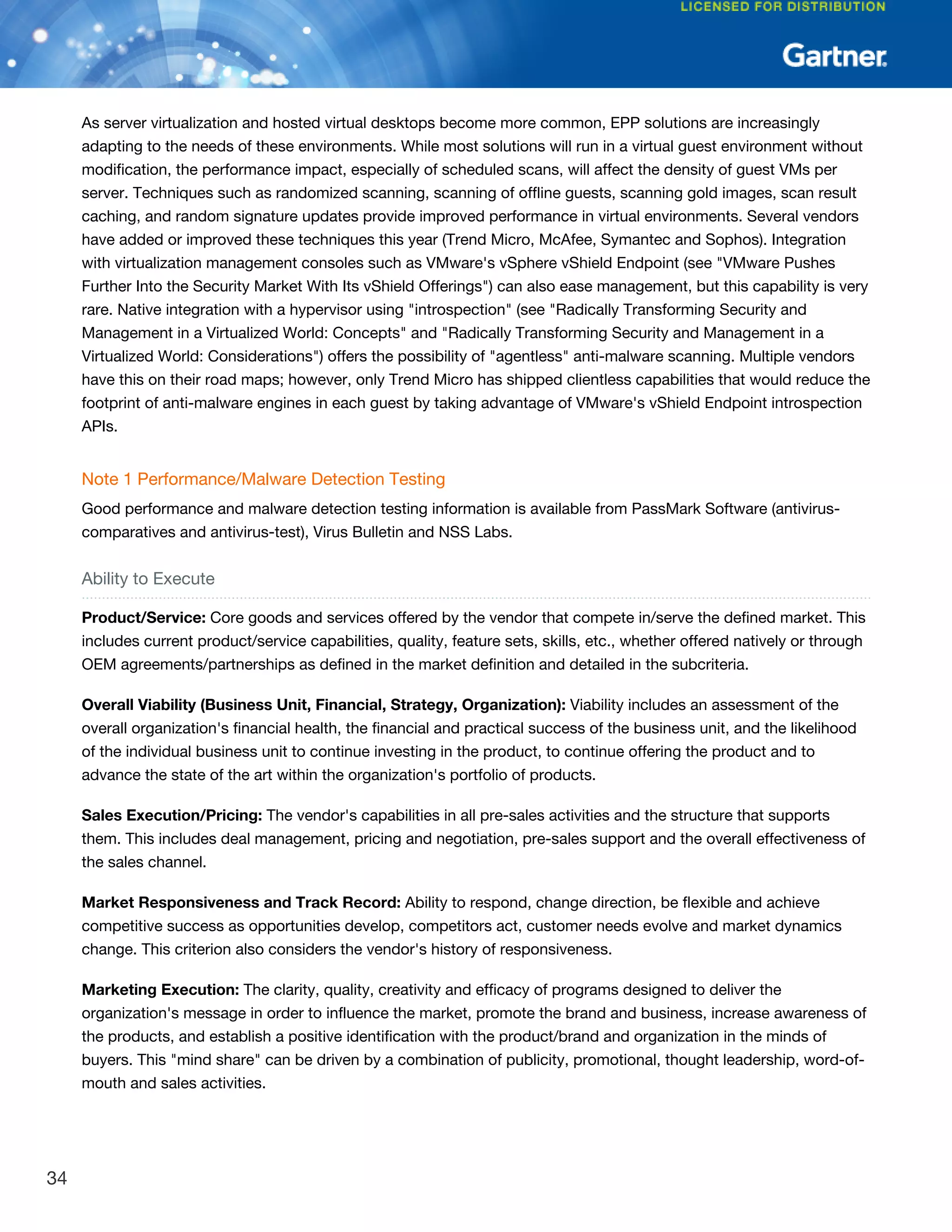Eset has built a substantial installed base in EMEA, particularly in Eastern Europe, and it has a rapidly growing small or midsize business (SMB) presence in North America. Its anti-malware engine is a consistently solid performer in test results. However, it lacks enterprise-grade management capabilities and investments in additional security features such as data protection or security assessments. F-Secure has consistently good malware detection results and supports virtual environments, but has very little brand recognition outside of Europe. Check Point is well-known for network security but has struggled to gain market share in endpoint protection due to its reliance on Kaspersky Lab for signatures and lack of data security features.
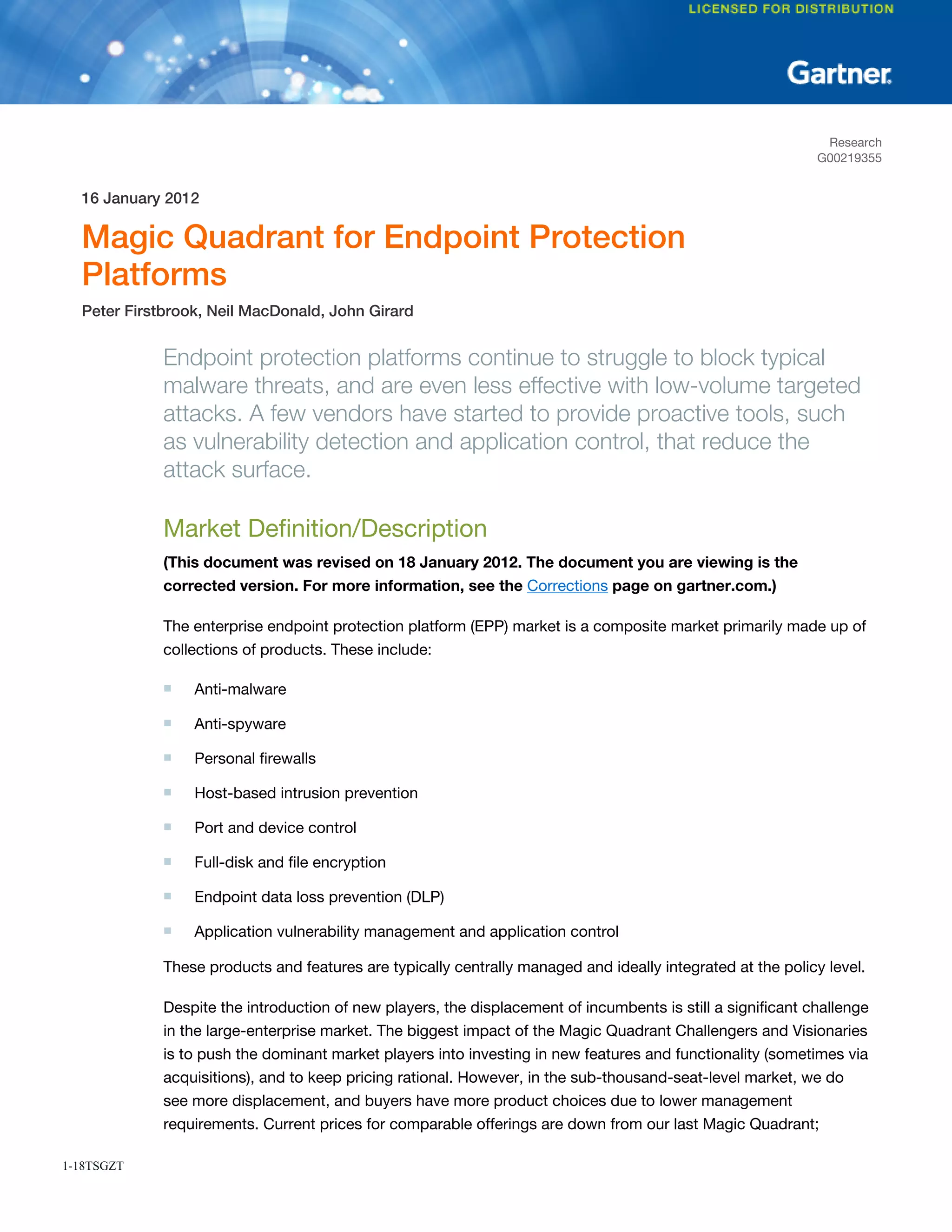
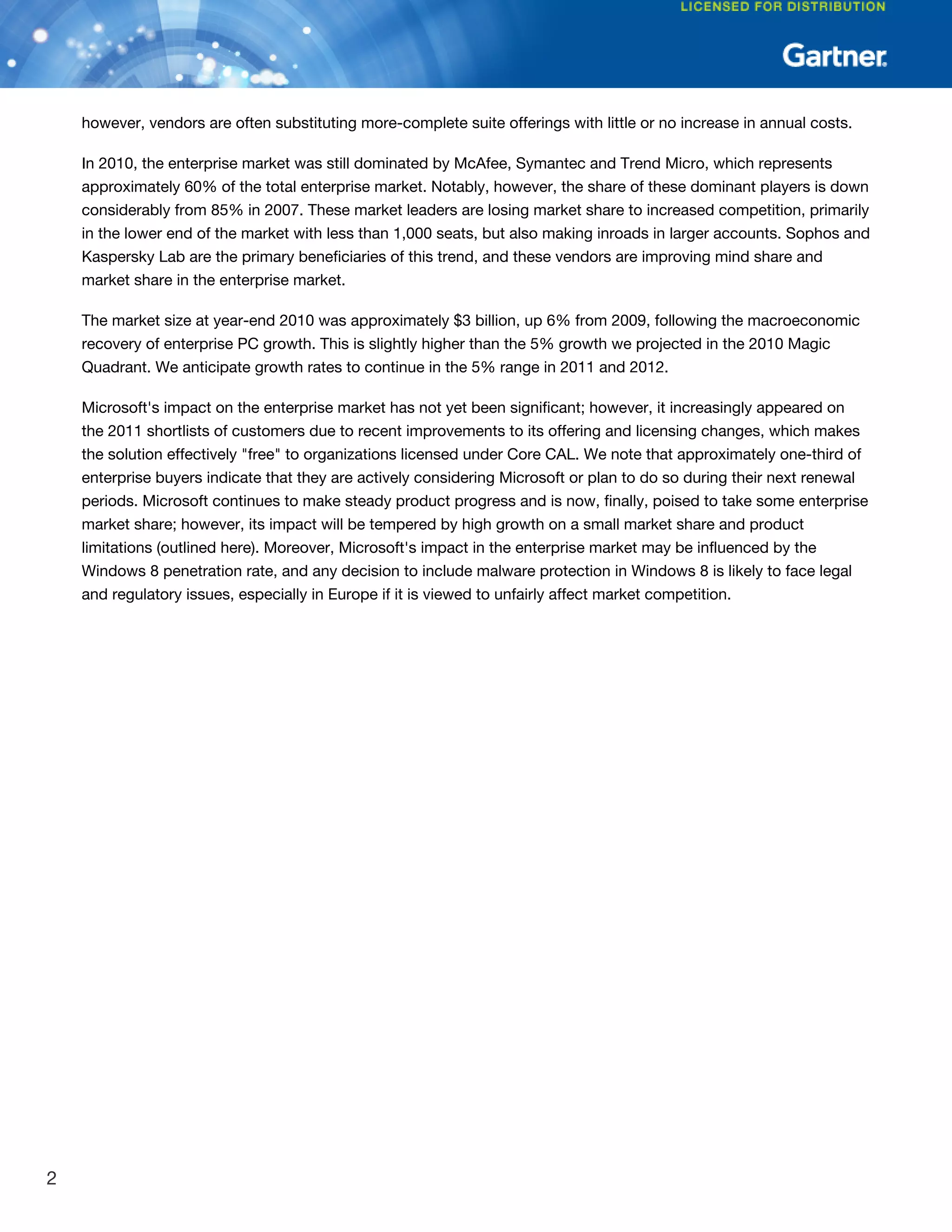
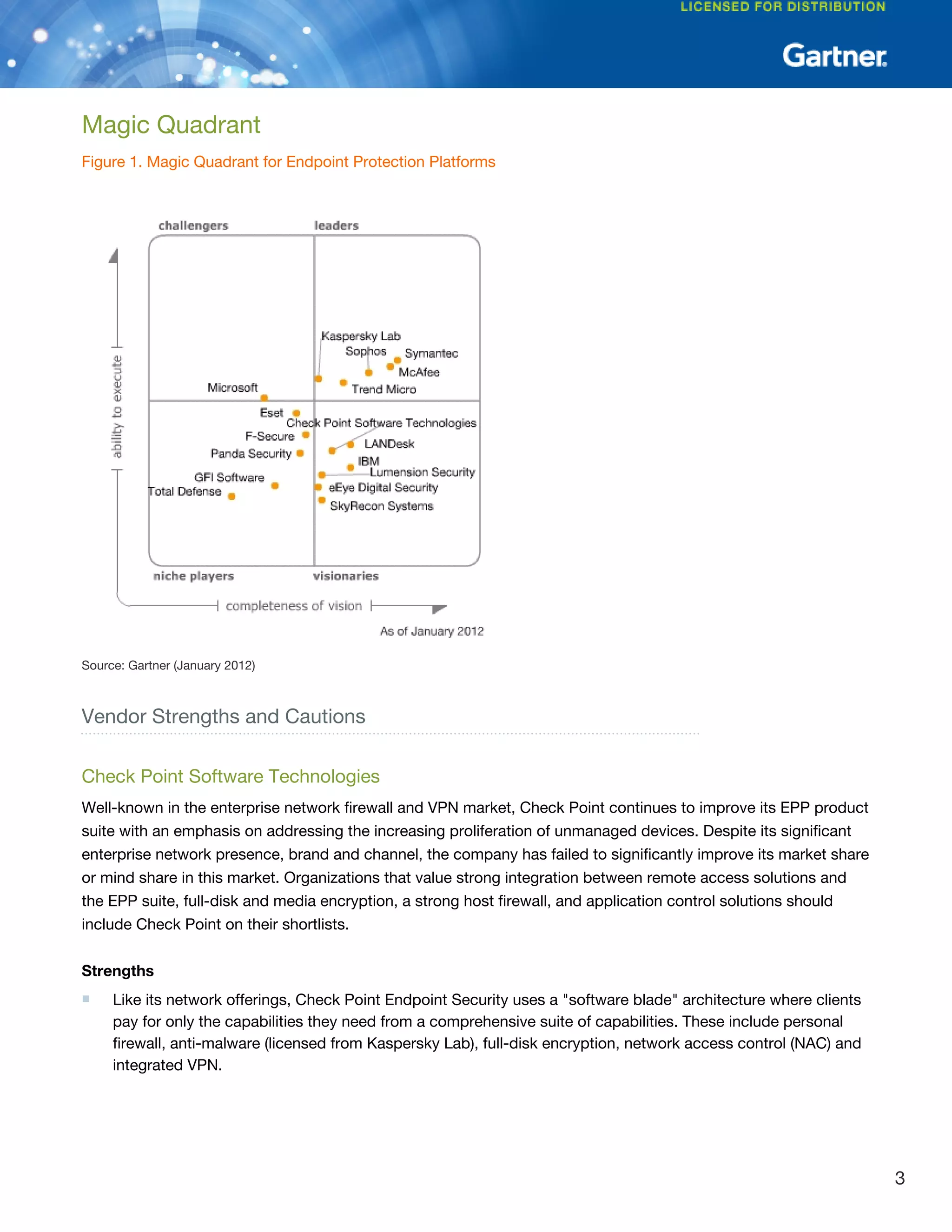
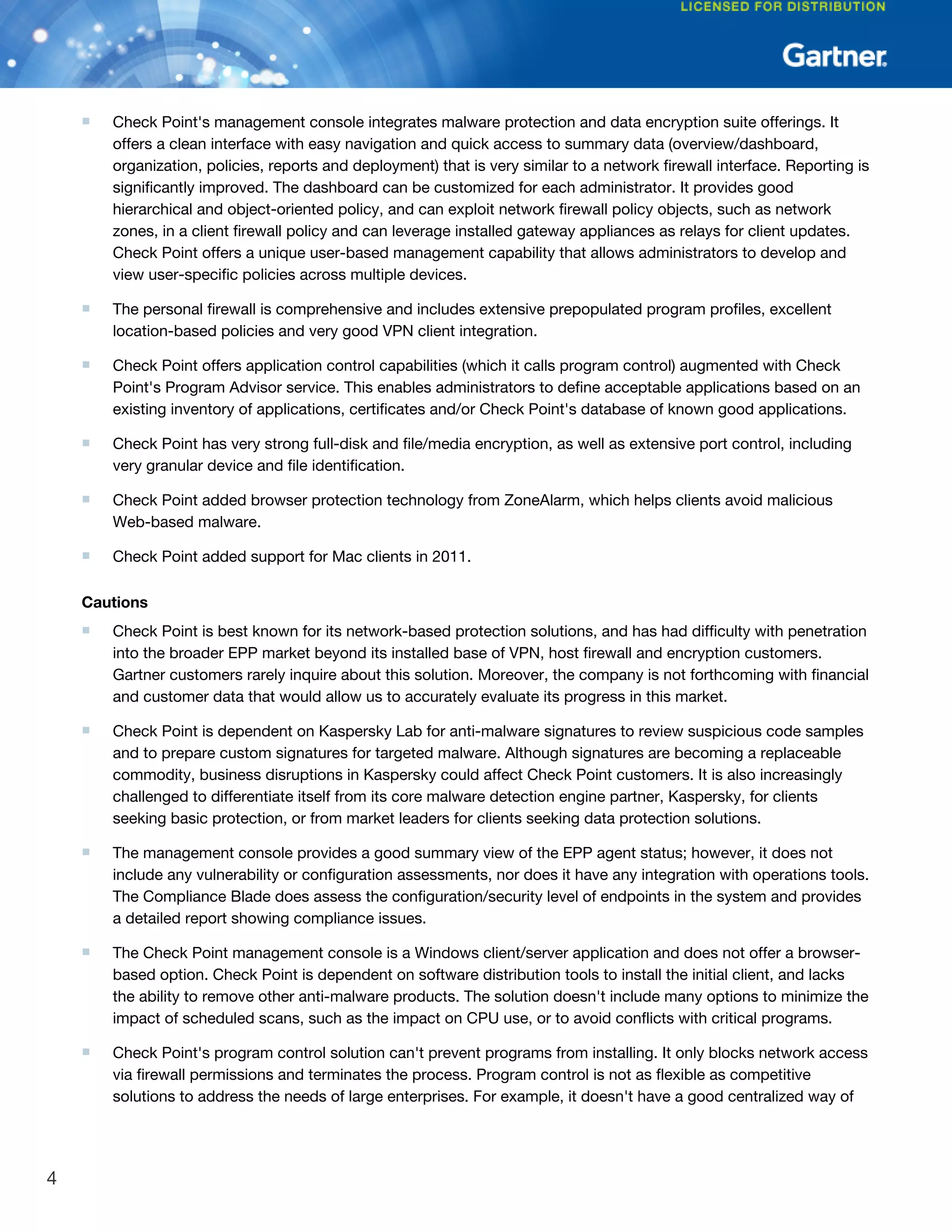


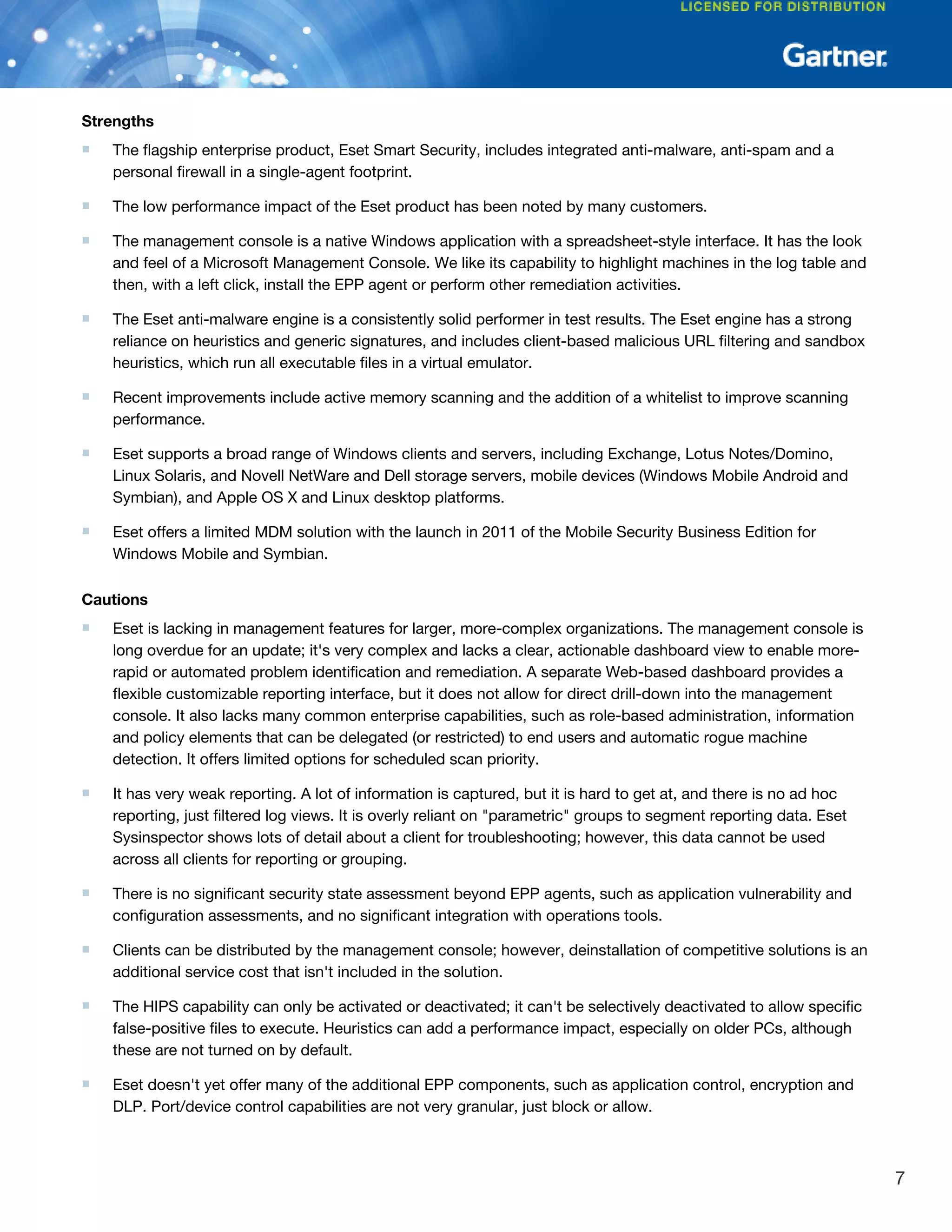
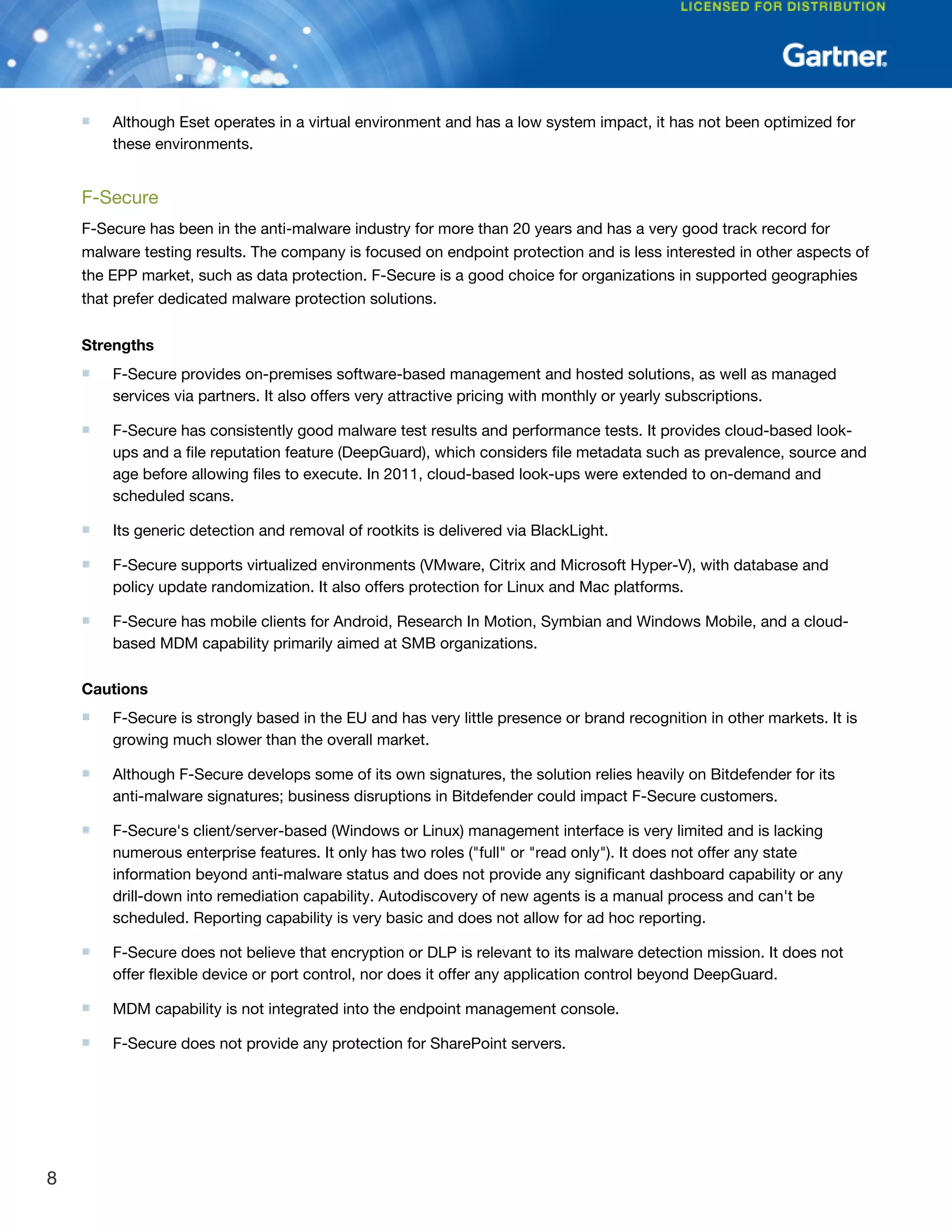
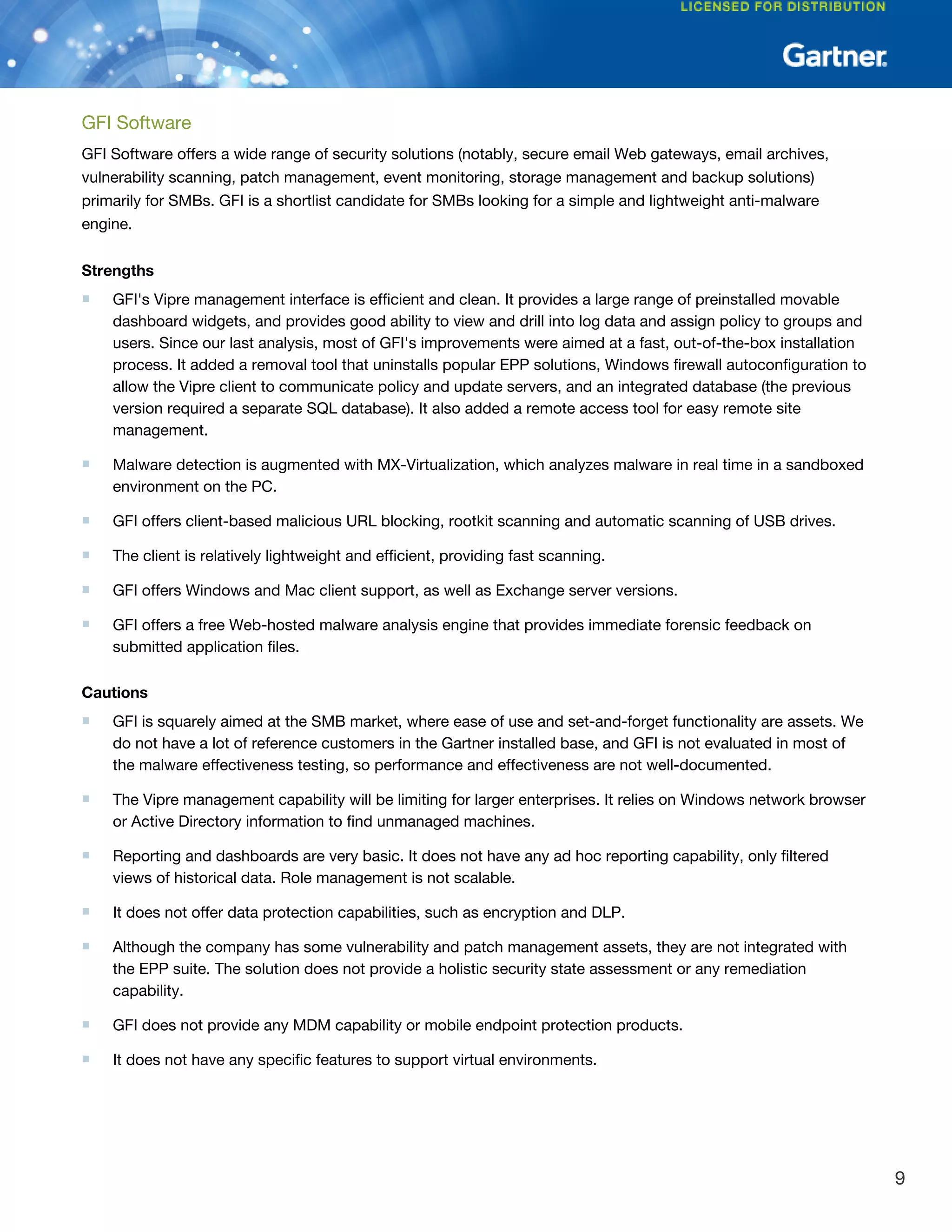

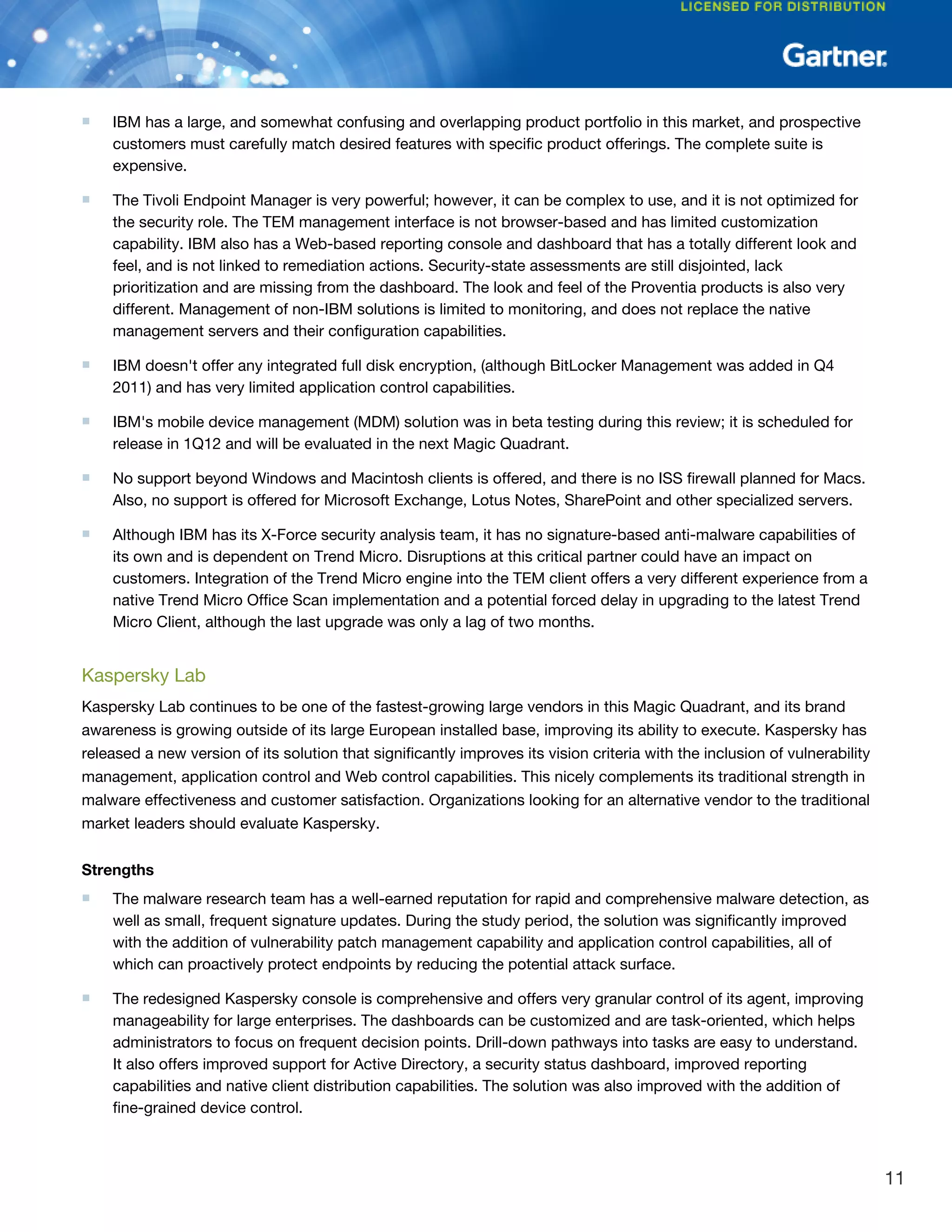

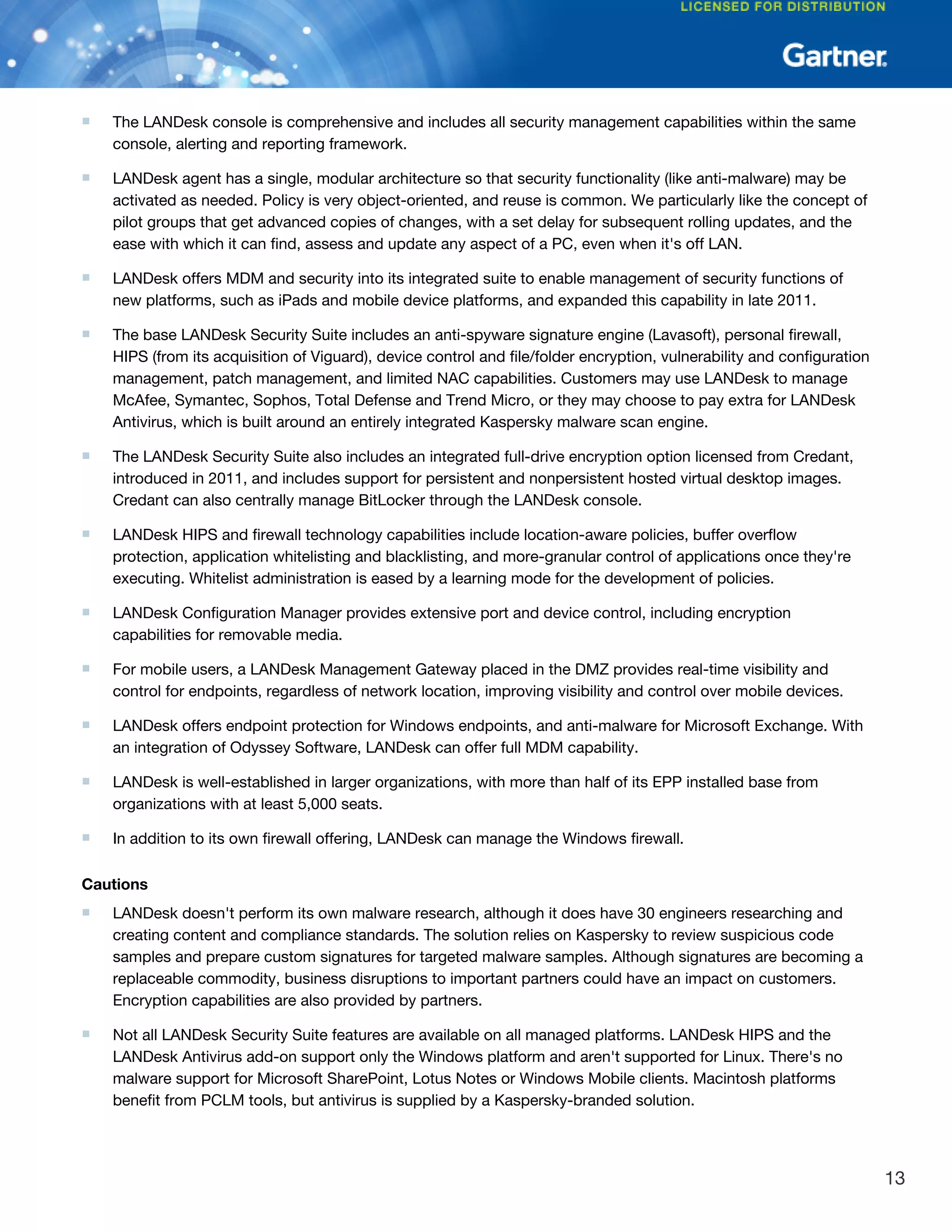
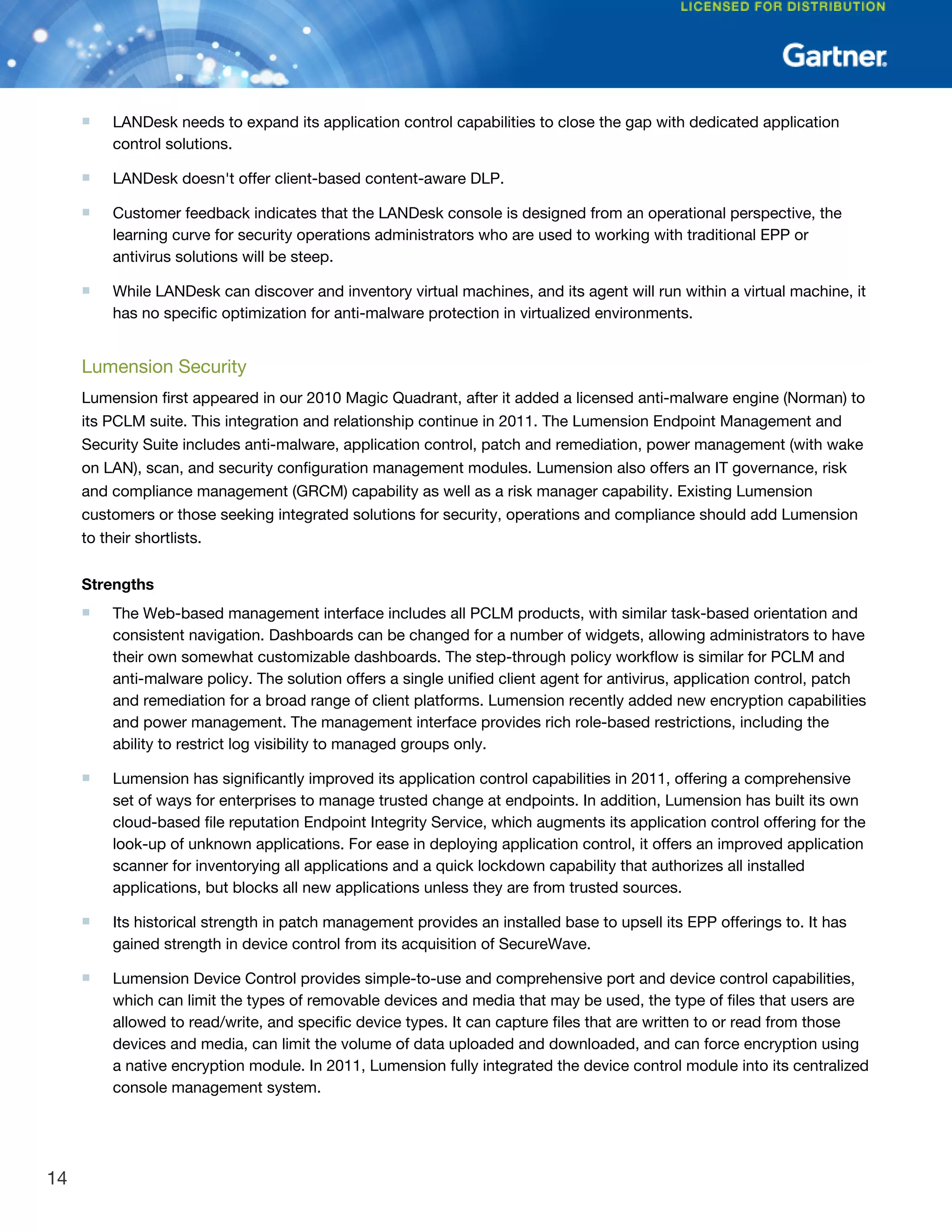


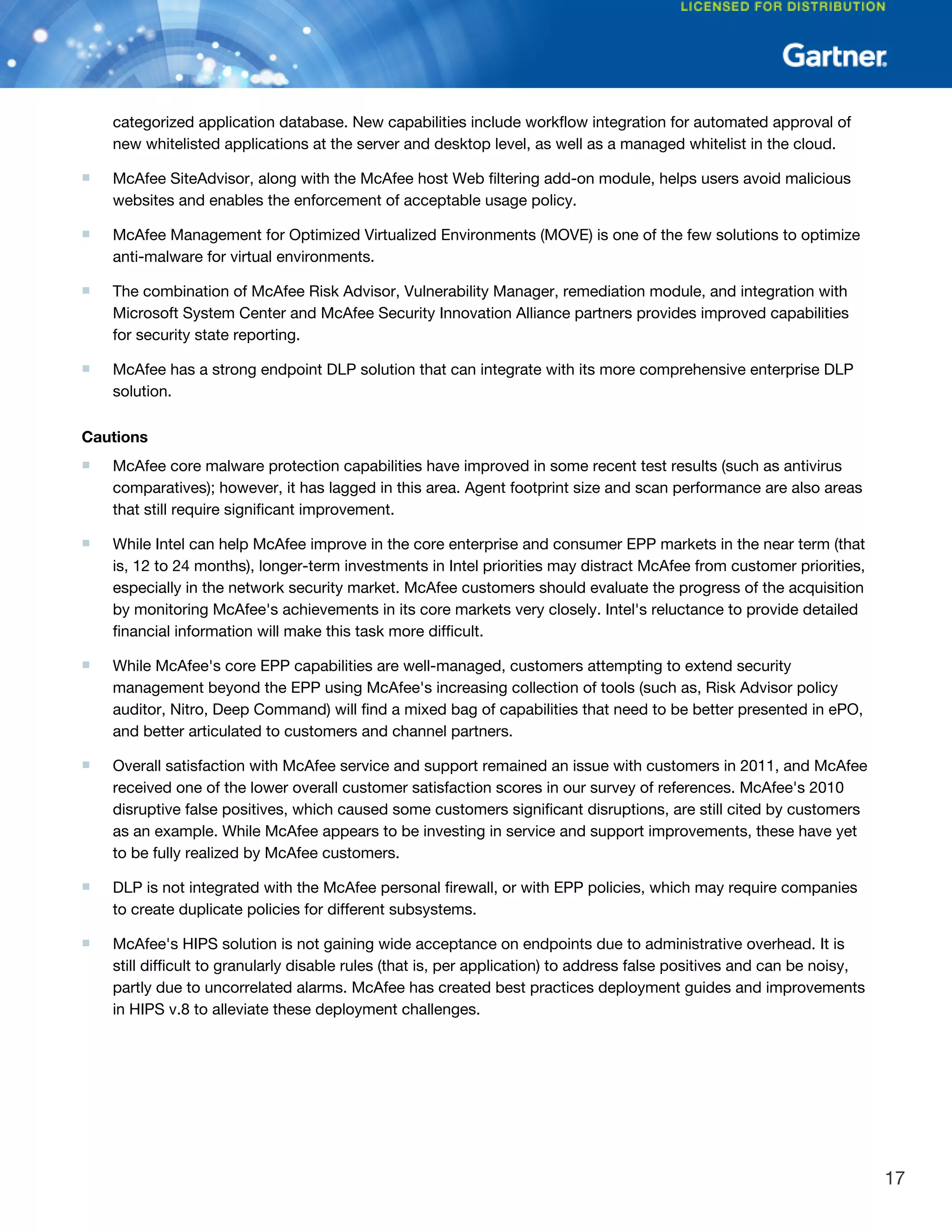




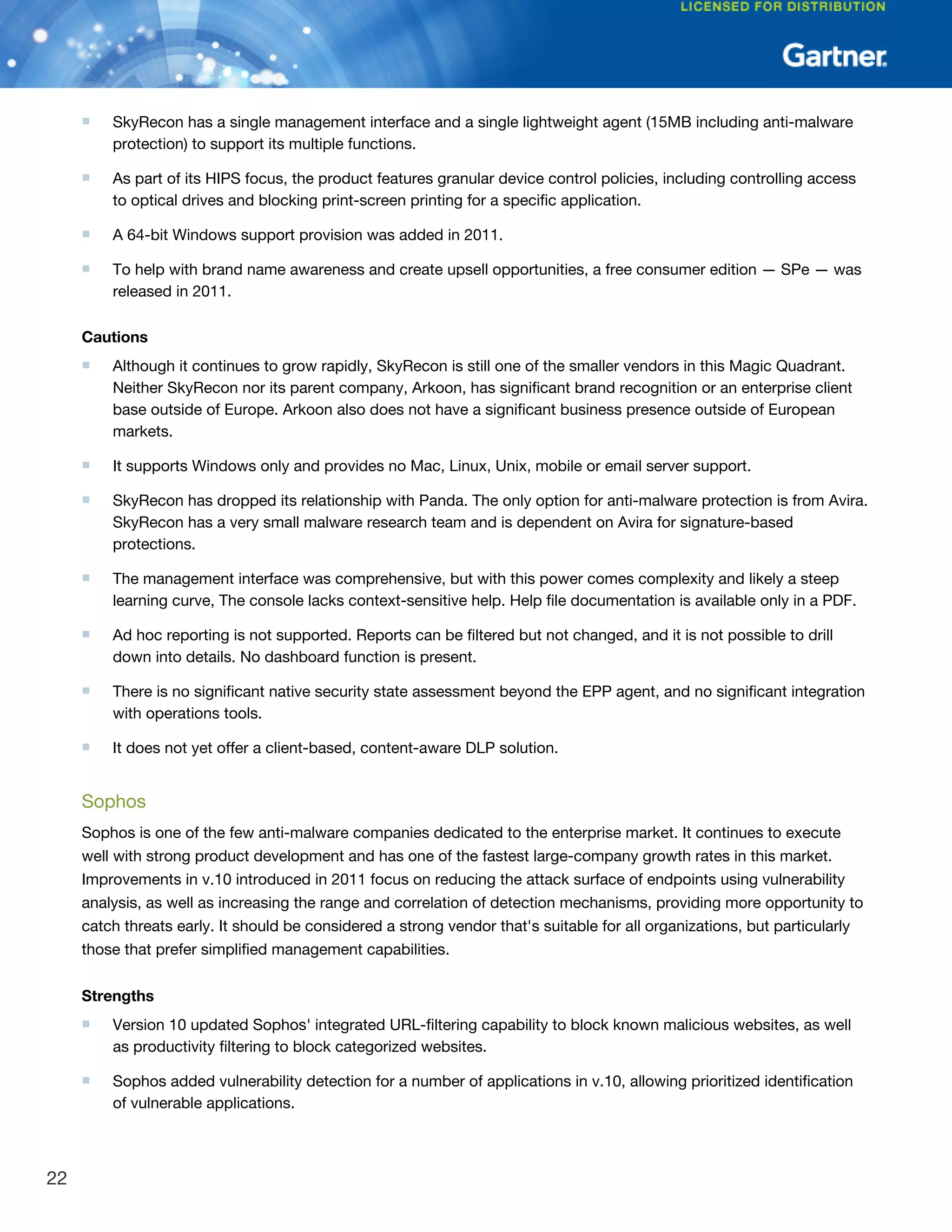
![■ Sophos provides basic application control capabilities that enable administrators to block installation of
unwanted applications or application classes (for example, point to point [P2P] and remote access).
■ Sophos continues to have a strong reputation for support and service from customers and its channel.
■ Windows, Mac, Linux and Unix clients are all supported in the management console.
■ Sophos also offers full-disk and file encryption, encryption key management, endpoint DLP, and very
granular device control in its suite.
■ Sophos recently completed the acquisition of UTM Gateway Astaro, which offers Web, email, wireless, and
SSL VPN capability.
■ Sophos offers a new MDM capability that includes a rich set of capabilities, including enterprise
configuration remote locate, lock and wipe.
■ For virtual environments, Sophos provides randomized scanning and updating, memory sharing, and
encryption.
Cautions
■ Its lack of consumer products has resulted in low brand recognition. The company must continue to focus
on expanding its international channel and marketing.
■ Although it does have a growing number of very large enterprise customers, and the management console is
designed for ease of use and low administrator overhead, it lacks the depth of large-enterprise features.
Policy development is eased with pop-up windows, check boxes or prepopulated menu lists, which can be
limiting for more-experienced administrators. The dashboard is not very graphical, nor does it allow much
customization or alerting capability. Dashboard elements were limited to the state of the EPP solution rather
than more holistic state assessment. Vulnerability assessments were notably missing in the dashboard (it is
found in the event viewer). It does not link directly to patch management systems. Reference customers
found the reporting capability limited, although Sophos recently added export capabilities to Splunk and
other tools, and an improved analytics capability is in the road map.
■ Web productivity filtering in the endpoint is limited to 15 Web categories and has limited reporting and policy
capability managed in the EPP management server. An additional 40-plus website categories with more
granular reporting and management are available with the deployment of the secure Web gateway server.
■ The application control capability is limited to blocking a specific set of unwanted but not malicious
applications and caching verdicts on good applications for scanning speed. It would be difficult to lock down
to a specific set of applications due to the lack of processes and workflow to allow for trusted change (due in
2H12).
■ While Sophos' endpoint DLP is an integrated component of the EPP agent, DLP capabilities are weaker than
vendors that specialize in the more comprehensive enterprise DLP market.
■ MDM is in a separate Web-based management interface. It does not offer traditional anti-malware for mobile
clients.
■ Its virtual environments cannot scan offline images or gold images (due in 2H12).
■ There is no integration or common management console between Astaro UTM products and the EPP suite.
23](https://image.slidesharecdn.com/g01-150521181309-lva1-app6891/75/G01-2012-magic-quadrant-for-endpoint-protection-23-2048.jpg)


